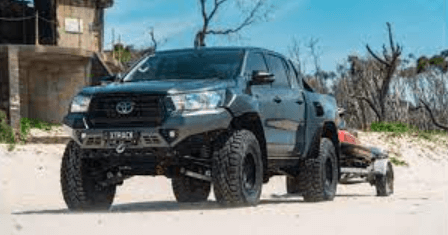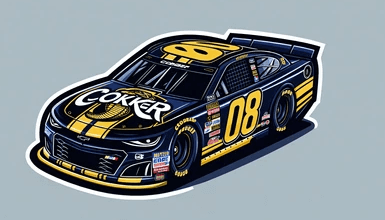Elevate Your Ride: A Comprehensive Guide to Suspension Lift Kits

Driving down rugged terrain or cruising through off-road adventures can be exhilarating experiences, but they often demand more from your 4×4 vehicle. That’s where 4WD suspension lift kits come into play, offering a solution to enhance performance and conquer challenging landscapes. In this comprehensive guide, you may delve into these kits, understanding their functionality, benefits, installation process, and considerations for choosing the right kit for your needs.
Benefits of Lift Suspension System
One of the primary advantages of installing a suspension system is improved off-road capability. With increased ground clearance, drivers can confidently navigate over rocks, mud, and uneven terrain without fear of getting stuck or causing damage to their vehicle. Additionally, larger tires fitted onto lifted suspensions offer enhanced traction and stability, further optimizing performance in challenging conditions.
Enhanced Aesthetics
Beyond functionality, these kits also offer aesthetic benefits, giving vehicles a more aggressive and commanding presence on the road. The lifted stance looks impressive and sets vehicles apart from the standard factory models, allowing owners to express their individuality and style.
Types of Lift Suspension System
There are several types available, each catering to different models and driving preferences. These include:
1. Body Lift Kits: They elevate the body from the frame, providing increased clearance without altering the suspension components.
2. Spacer Lift Kits: They utilize spacers placed on top of the vehicle’s existing suspension components to achieve lift, making them a cost-effective option for those on a budget.
3. Spring Over Axle (SOA) Lift Kits: SOA systems involve relocating the vehicle’s leaf springs to sit on top of the axles, resulting in significant elevation and improved articulation for enhanced off-road performance.
4. Coil Spring Lift Kits: Commonly used for vehicles with coil spring suspensions, these kits replace the factory springs with taller ones to achieve elevation and accommodate larger tires.
Installation Process
While the installation process may vary depending on the type of the system and the vehicle’s make and model, it typically involves several steps:
1. Preparation: Start by collecting all required tools and equipment, ensuring the workspace is tidy and safe.
2. Lifting the Vehicle: Use a jack to elevate the vehicle and secure it on jack stands to provide ample clearance for the installation process.
3. Removing Factory Components: Detach the existing suspension components, including shocks, springs, and control arms, per the manufacturer’s instructions.
4. Installing Lift Components: Follow the provided guidelines to install the new components, including spacers, springs, and any additional hardware.
5. Adjustments and Alignment: Upon installation, make any essential adjustments to guarantee the correct alignment and optimal functionality of the suspension system.
6. Testing: Before hitting the trails, conduct a thorough test drive to verify the effectiveness and safety of the installed leveling system.
Read also: How Physical Sunscreens Keep Your Skin Healthy and Glowing
Choosing The Right One
When selecting these systems for your vehicle, it’s essential to consider the following factors:
1. Vehicle Compatibility: Ensure they are compatible with your vehicle’s make, model, and year.
2. Intended Use: Determine whether the kit is suitable for your intended driving conditions, whether it’s off-road adventures, daily commuting, or a combination of both.
3. Quality and Durability: Invest in a high-quality one from reputable manufacturers to ensure longevity and reliability.
4. Budget: Consider your budget constraints and opt for one that offers the best value for your money without compromising on quality or performance.4WD suspension lift kits offer an array of benefits for drivers seeking to enhance their vehicle’s performance, aesthetics, and off-road capabilities. By understanding its various types, the installation process, and important considerations, drivers can make informed decisions to elevate their rides to new heights. Whether tackling rugged trails or cruising through city streets, they can transform any vehicle into a capable and commanding machine.







